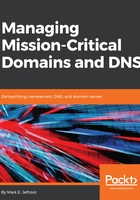
What is "CyberSquatting"?
There is a lot of confusion around the term "cybersquatting." It is frequently misconstrued as any time somebody registers a domain and doesn't actively use it for something. But that is not cybersquatting. A lot of people feel there should be some manner of use-it-or-lose-it rules around domain names and they view those who don't use their own domains as cybersquatters.
It's a fallacious argument, since "use" is entirely subjective. Use versus non-use is an opinion. Even if a domain is intentionally not delegated in its TLD, it may be that way for a reason and thus constitute "use." More often, the cybersquatting charge is leveled against "domainers," defined as people and companies who register large numbers of domain names and then either offer them for sale in the aftermarket, monetize them via ads or lead generation, or both.
There is a perception that doing so is not a "legitimate" use of the domain; however, that is a purely subjective opinion (not to mention a sanctimoniously Marxist one).
My stance on this has been borne out in repeated findings by UDRP panels that "domain parking" is a legitimate use of a domain name, and further, that asking for an "inflated sum" of money in the aftermarket is again, subjective, and not evidence of a bad faith registration." ("Bad Faith" being a key requirement in a domain dispute proceeding)
So, what is "CyberSquatting" then?
It is when some party deliberately and intentionally registers misspellings or alternate TLD versions of your domains and does the following:
- Uses it in a way that is "confusingly similar" to your own (passing off)
- Benefits from your trademarks, that is, running ads for your products or those of a competitor
- Intends to profit from the domain through these methods or from an eventual sale of the domain to you or otherwise
A textbook example of cybersquatting would be the registration of yourtrademark.co (capturing typo traffic from people missing or neglecting to type the final "m" in yourtrademark.com) and then redirecting that traffic to an affiliate program selling your own products, or that of a competitor.